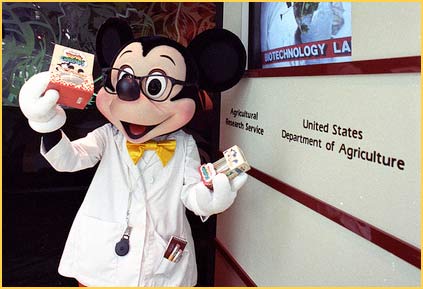
Last time, in tune with National Diabetes Month, Childhood Obesity News looked at the discoveries made by Harvard University’s Dr. Barbara Kahn in regard to the importance of human fat cells getting enough sugar. In pursuance of her experiments, Dr. Kahn created some elaborately tailored mice over the last 20 years. The description of the mice specifically bred for a particular scientific purpose is a peek behind the curtain at the minutiae of lab work. Medical News Today wrote:
Kahn generated mice with genetic alterations in the amount of GLUT4 in fat cells, seeking clues to the link between obesity and diabetes… One set of mice features 5 to 10 times the usual number of glucose transporters in its fat cells. These mice are obese but exhibit none of the diseases usually associated with obesity. Another set of mice is missing the glucose transporters on their fat cells, which causes diabetes symptoms despite the fact that these mice have normal body weight.
GLUT4, incidentally, is found not only in fat cells but in muscle and heart cells. The number of glucose transporters on fat cells decreases with obesity, and is an early indication of developing diabetes. For such narrowly focused studies, it’s understandable that a scientist would design custom mice to serve the purpose of the experiment.
But there seems to be a big, serious, and generally unacknowledged problem with lab mice in general. Apparently, the billion-dollar-per-year mouse industry is based on a fallacy. For Slate magazine, Daniel Engber gathered an enormous amount of information, primarily from neuroscientist Mark Mattson.
Ideally, lab animals are supposed to be value-neutral. The technique is to start with a bunch of regular standardized critters that are as identical to one another as possible. Then the scientist can do something interesting with one group of subjects and reserve a control group that is pretty much left alone. At the end of the experiment, the difference between the two groups yields the result.
Unfortunately, before the scientist even welcomes them to their new cages, the animals in both groups have already been altered. Because of the way they are raised, mice bred for lab work bear scant resemblance to their cousins who live under natural conditions. They are bigger, because food is constantly available. Whether a lab requires dozens or thousands of mice, the economical way to nourish them is to periodically fill up their miniature grain hoppers with food pellets and let them eat at will, or ad libitum. Besides, they have nothing else to do.
Mattson calls them “couch potatoes,” and used more formal academic language to describe their shortcomings in a 2010 paper he co-authored, titled “ ‘Control’ laboratory rodents are metabolically morbid: Why it matters.” The Proceedings of the National Academy of Sciences published it.
Engber writes:
That such a lifestyle would make rodents unhealthy, and thus of limited use for research, may seem obvious, but the problem appears to be so flagrant and widespread that few scientists bother to consider it.
Medical research aspires to cure humans, who can’t be experimented on, so mice diseases get a lot of attention. Despite the fact that mice differ from humans in several important respects, the little animals are necessarily a basic tool of the biomedical trade. But Mattson and a few others fear they are a defective tool, what Engber calls a “shoddy industrial product,” whose inferiority adds a second layer of potential error to all research that involves them.
Your responses and feedback are welcome!
Source: “Discovery Of Protective Gene In Fat Cells May be Therapeutic for Type 2 Diabetes,” Medical News Today, 04/02/12
Source: “The Mouse Trap,” Slate, 11/16/11
Image by USDAgov (U. S. Department of Agriculture).

 FAQs and Media Requests:
FAQs and Media Requests: 











